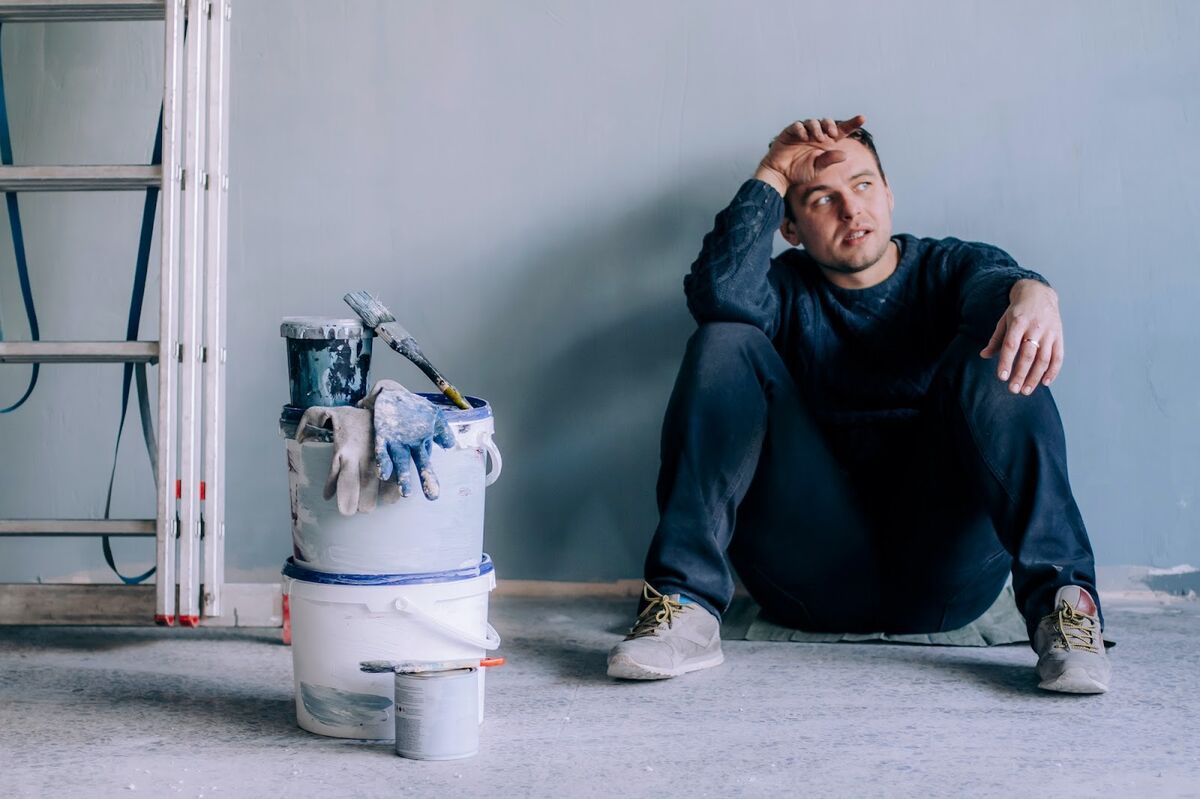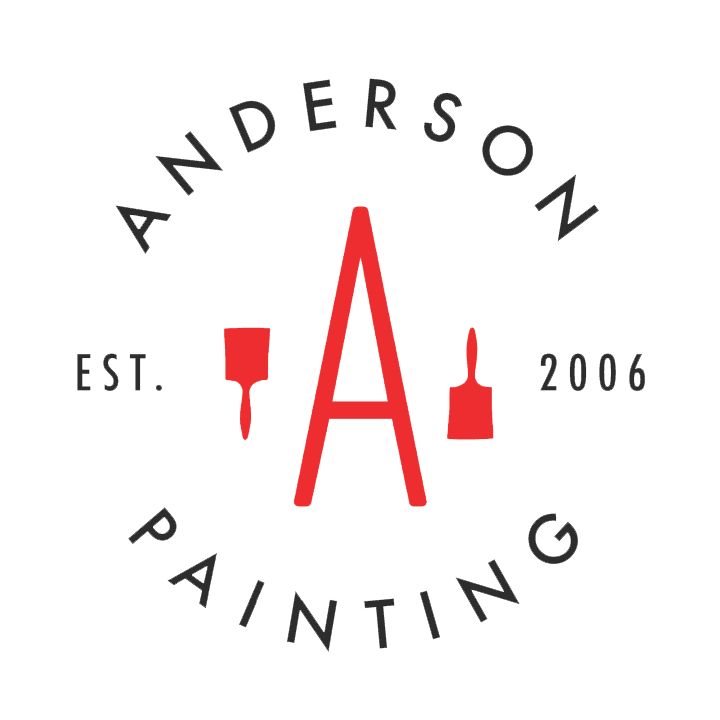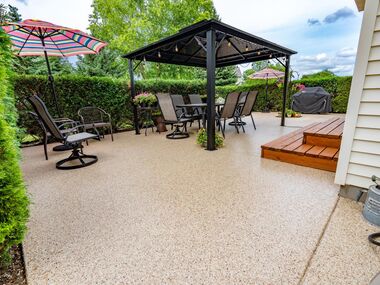Potential Pitfalls of DIY Residential Painting Projects

You take a look at your home and decide it needs a fresh coat of paint. Whether you want to paint the interior or exterior, you may briefly wonder whether you can do it all yourself. After all, you can buy some paint, paintbrushes, and paint rollers. How hard can it be?
A DIY painting project can be much more challenging than you realize. No matter how committed you are to doing it yourself, your DIY painting project is unlikely to deliver the same results as you’d get when hiring reputable professionals. In this blog, we’ll answer, “What mistakes can you make when painting?” before you even finish asking yourself the question.
Underestimating the Required Skill
Most mistakes with DIY residential painting projects stem from underestimating just how much skill and experience are required to get it done right. Painting requires knowledge, experience, and a careful hand. Every time a professional paints a property, they gain a bit more experience and improve gradually with each project, even when they already deliver amazing results.
At the most basic level, you likely don’t know how much skill it takes to avoid patches, streaks, or lines on the finished surface. You may also underestimate what goes into choosing the optimal paint, preparing the surfaces, and even knowing how long to let each coat dry.
Underestimating the Time Required
In addition to thinking that DIY painting is easy, many people lack the concept of how long a project like this will take. Remember – you can do the job quickly and deal with poor results, or you can take your time and do it well. A professional residential painter will always choose the latter. They understand the value of waiting for each coat of paint to dry fully. They fully grasp the need to take time to prepare even before they apply the first coat. None of this means the pros rest on their laurels – on the contrary, professional painters are armed with the resources and skills to work efficiently without cutting corners.
The Project Will Take More Time Than You Think if You Go it Alone
Interestingly, despite underestimating how long it takes to paint your home, most DIY painting efforts take longer than a professional job. For starters, you have to carve out time in your schedule to tackle the entire task. But if you hire someone, they can paint as you attend to your regular schedule, from work to running errands.
And, as mentioned earlier, professionals will be able to work much more efficiently than you. Their experience, equipment, and labor force enable them to paint a smooth surface quickly and correctly. They won’t be painting at a turtle’s pace to install painter’s tape properly or paint without getting it on an unintended surface.
Choosing the Wrong Paint Type or Finish
When it comes to choosing paint, there are plenty of rookie mistakes a DIY painter can make, from choosing the wrong color, brand, composition/type, or finish. We’ll touch on color in the next point, but the type and finish of paint are worth discussing separately.
For starters, a paint finish can be high-gloss, semi-gloss, satin, eggshell, or flat/matte. The finish you choose will depend on how much traffic the room gets, the sheen you want the paint to have, and how visible you want surface imperfections to be. If you were to decide which finish to use yourself, you could only give your best guess. Some online research will help, but picking the perfect finish requires more foresight and experience. A professional knows what finish makes the most sense in your space.
You will also be faced with the choice of oil, enamel, acrylic, or latex paint. As with finishes, each type of paint is best used in a certain scenario. It will depend on your home, the surface underneath, and other factors. The average homeowner doesn’t know how to distinguish each type or how to use them, but professionals will.
On top of the finish and type of paint, your decision will be further complicated by technical terms like low-VOCs or no-VOCs. Professional painters are equipped and knowledgeable on these terms and are happy to explain them to you while helping you decide which paint is best for your space.
Not Testing the Color – Or Using Too Small of a Test Area
A common mistake with any painting project is failing to confirm that your chosen color is the one you want. Paint can look very different in the can or in a picture than when it dries on a specific surface. Lighting and context matter. That’s why you should always get sample swatches to help you decide. Then, paint a small test area to confirm it is the shade you envisioned. This prevents you from painting an entire wall or room only to realize that it doesn’t result in the shade you had in mind.
Of course, color selection can be a problem whether you do the painting yourself or hire professionals. The difference is that a professional residential painter will be aware of this concern ahead of time. So, they will always paint a large enough test patch to let you confirm your choice. They will also know how paint tends to dry and how different lighting setups affect color, so they can better guide your color selection.
Not Repairing Before Painting
Before you can apply a fresh coat of paint, you may need to repair the surface you plan on painting. Sometimes, this will just mean wiping down walls and caulking a few holes. Other times, however, it can require patching drywall or repairing carpentry. No matter how many instructional videos you watch, your skill at repairing carpentry, patching drywall, and similar tasks won’t match that of professionals – and the success of your paint job may hinge on this fact.
If you apply paint to an unrepaired surface, you are simply masking the problem. The paint won’t look even when it dries, and you run the risk of leaving the underlying problem to crop up again and worsen.
The good news is that residential painting services can easily make these repairs. The best ones offer carpentry repairs, including repairing drywall and caulking. When repairs are addressed, the area you repaint will last longer and look great when you’re done.
Not Prepping Enough
Repairing damage before you repaint is just one part of preparing to paint your residential property. You will need to tape off finishes, lay down tarps, and do all the necessary preparation. You may even need to sand or smooth the surface, depending on the material. You will have to apply primer as well.
All these requirements offer yet another opportunity for a mistake, which is especially true if you want to finish your residential painting projects quickly.
You may wonder, “What mistakes can you make when painting if you cut corners?” In the best-case scenario, your paint may appear a little splotchy, or you simply spill a drop of paint on another surface. Other possibilities, however, could include spilling paint on your floor or furniture. You could mistakenly paint a baseboard, trim, or another surface you didn’t intend to. Or, if the issue is failing to sand, smooth, and prime the wall, your paint may not be as vibrant as you’d hoped. You would soon find yourself with peeling paint despite all your hard work.
Obviously, professionals offering residential painting services have all the training and experience to do this job well. Their experience enables them to do all the necessary prep work without forgetting any essential steps in the process.
Buying the Wrong Tools – Or Having to Buy Them at All
If you decide to paint your home yourself, you have to buy all of the supplies for the job. You need more than just a bucket of paint and a few brushes or rollers. Beyond that, do you know which paintbrushes and paint rollers are best? Do you know which painter’s tape will stick to the wall but come off easily without damaging any surface? Do you know which drop cloths will actually protect your furniture and floors?
Professionals not only know what supplies they need for residential painting projects – they also have them on hand for every project. In other words, you don’t have to buy anything or even go to the hardware store, spending money on supplies you won’t regularly need. Save money and storage space by hiring pros.
Sustaining Damage or Injuries
An often-overlooked pitfall of DIY painting is the possibility of damaging your property or injuring yourself, which could be a time-consuming and costly mistake. Paint jobs often involve tripping hazards, the use of harmful chemicals and dangerous tools (including ladders, sanders, utility knives, etc.), and other hazards. With professional painters, this won’t be as much of a concern since they have adequate training, experience, and liability insurance.
Hire Anderson Painting for Your Residential Project
At Anderson Painting, we admire the DIY spirit and encourage every customer to hone their painting skills if they so choose. That said, DIY projects are filled with potential pitfalls, and an investment as significant as residential painting can’t leave too much room for error. With that in mind, work with a team who can get the job done right the first time, on time, and offer all the additional services you need to ensure your property looks its best. Call us today at 919-610-1855 or email us at info@andersonpaintingnc.com!



